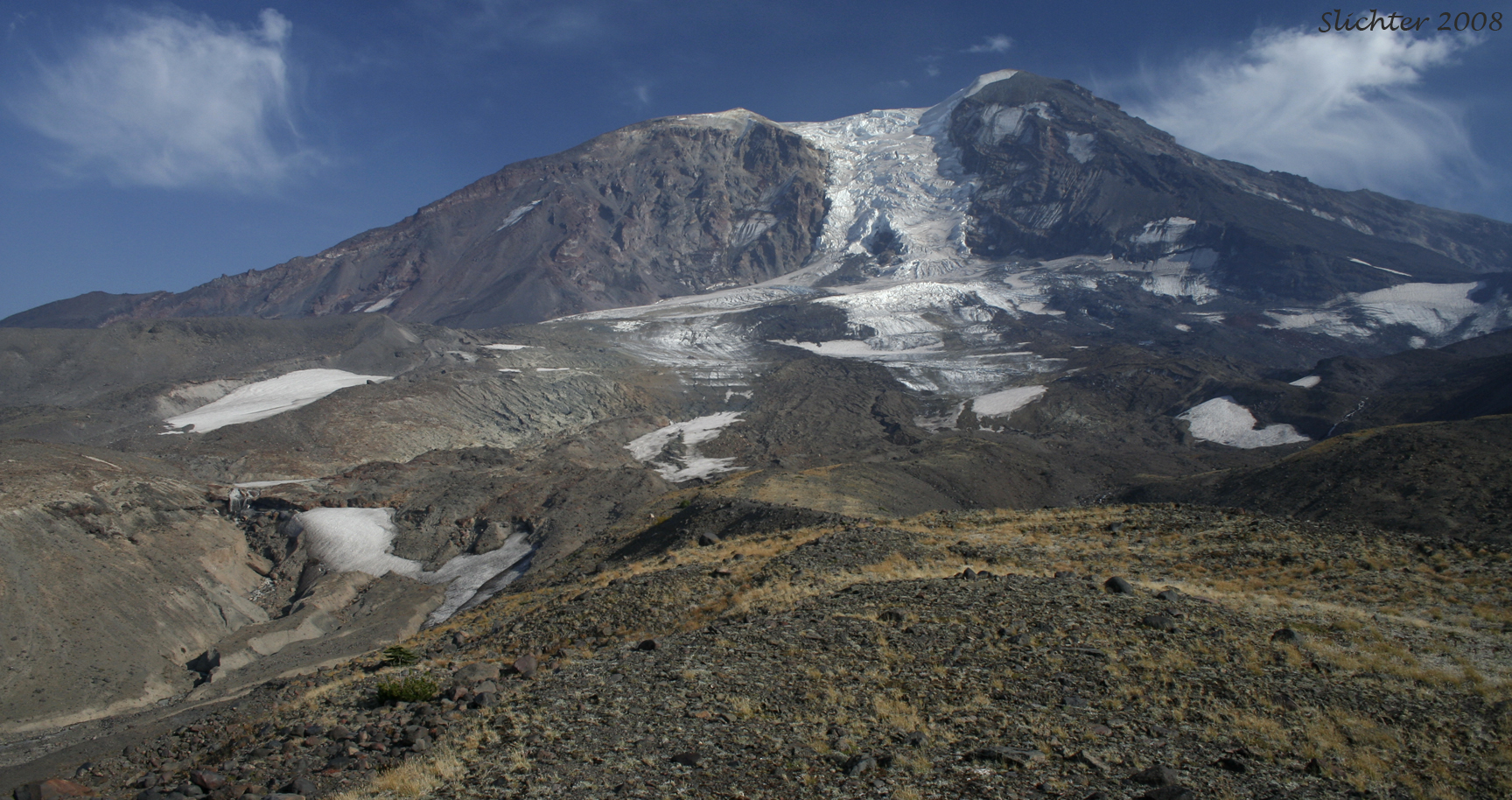
From Trout Lake, continue as above on Road #23 past road #521 for another 11.5 miles (the road transitions to gravel and narrows just north of the junction with Road #90) to a junction with paved Road #2329. Proceed right on Road #2329, passing Takhlakh Lake where the road becomes gravel again and then Takh Takh Meadows on the left. forest Road #115 is reached 11 miles north of Rd #23. Turn right onto Rd #115 for about one-half mile to a point where the PCT crosses the road and park in the small lot on the north side of the road.
Directions from Seattle and Tacoma:
Take Exit 133 from Interstate 5 in Tacoma and proceed south for 55 miles along State Highway 7 to Morton, WA. At Morton, drive east on US Highway 12 to Randle. From Randle, turn south onto State Route 131 (may be signed Forest Road #25) for 0.9 miles. Turn left (east) onto Road #23 and proceed uphill to either the junction with Road #2329 (for the north trailhead) or continue south to the south trailhead at Road #521. Depending on traffic, the trailheads are 2-3 hours south of Tacoma.
Alternate Trail Access:
Additional trails access the Pacific Crest Trail from the north. These include the Muddy Meadows Trail #13, Divide Camp Trail #112 and Killen Creek Trail #113 accessed via Road 2329.
Trail Use: Moderate to heavy. Besides the South Climb Trail, this is the region on the mountain that sees the largest amount of use. Day hikers are most common during weekends, while a fairly large number of back packers can be seen any day of the week. A fair amount of horseback travel may be encountered along the trails in this area during weekends and holidays. Dust kicked up along the access trails after even short dry spells can be a problem for some folks sensitive to adverse air quality.
Permits: Northwest Forest Passes should be displayed at any trailheads accessing this trail. Wilderness permits should be carried at all times (the PCT is patrolled by forest guards). Cascades Volcano Passes should be obtained for any planned travel above 7000', and those who plan to ascend the west or southwest sections of the mountain should register at the Forest Service Ranger Station at Trout Lake.
Water: Due to the large amount of ponds and clear streams that run the bulk of the year, water will be less of a problem than on most other sides of the mountain. Boil or filter all water along this route! Either carry out human and dog wastes or practice good sanitation by burying wastes far from water, to prevent contamination of the lakes and streams along this route.
Special Considerations: The crossing of Adams Creek can be quite tricky after lengthy periods of heavy rain or long periods of hot weather due to high volumes of silty, melt water coming from Adams Glacier. It may be best to time your crossings of this, or any other difficult creeks for early to mid-morning to avoid the higher water volumes. In addition, black bears may be encountered along the trail, especially as berries ripen from mid-summer on. Store food (and garbage) in sturdy waterproof bags or containers. Using light but strong rope, cast the rope over a high branch in a tree and hoist the food (or your pack/s) so they are about 10 feet off the ground. Upon encountering a bear, stop and face the bear. Give it a chance to move off. If you need to move off, slowly back away, glancing at your footing so you don't trip. If the bear follows, you might also wave your arms, yell, bang metal objects together, etc to frighten it. In 30 years of hiking the area, I've only encountered two bears in over 30 years hiking in this area, and both quickly moved away when they saw me!
As mentioned above, the area around the Pacific Crest Trail #2000 from the Divide Camp Trail #112 north to the Highline Trail #114 is heavily visited by day hikers, back packers and horse traffic through much of the season. The reasons for this are its easy access and because the north climb route can be accessed from this area. In addition, there is clear running water in the many streams traversing the area as well as numerous ponds which provide attractive spots for camping as well as a refreshing dip after a hot day of hiking. Finally, there are numerous spots along the Pacific Crest Trail and higher reaches of its access trails which afford flower filled views towards Mt. Adams.
Many folks backpack to this location, set up base camps, then do day hikes to High Camp, south to Adams Creek, or around the north side of the mountain towards the Devils Garden (via the Highline Trail). This latter is more difficult due to its length plus the need to cross two or three substantial creeks.
Mosquitos and biting flies can be problems during the first 6 weeks of the season or so during most years.